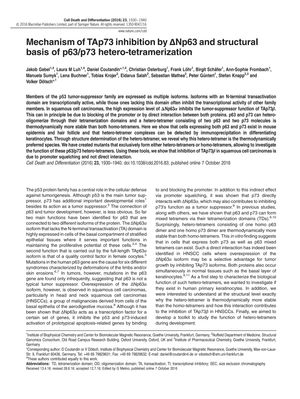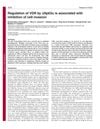Mechanism of TAp73 Inhibition by ΔNp63 and Structural Basis of p63/p73 Hetero-Tetramerization
October 2016
in “
Cell death and differentiation
”

TLDR ΔNp63α stops TAp73β from working in skin cancer by blocking its access to specific genes, not by directly interacting with it.
The study investigated the interaction between different isoforms of the p53 tumor-suppressor family, specifically how ΔNp63α inhibits the tumor-suppressor function of TAp73β in squamous cell carcinomas. It was found that p63 and p73 can form stable hetero-tetramers, which are more thermodynamically stable than homo-tetramers. The presence of cells expressing both p63 and p73 was confirmed in mouse epidermis and hair follicles, and hetero-tetramer complexes were detected in differentiating keratinocytes. The structure of the hetero-tetramer was determined, explaining its stability. Mutants that exclusively form either hetero-tetramers or homo-tetramers were created to study their function. The results showed that the inhibition of TAp73β by ΔNp63α in squamous cell carcinomas is due to promoter squelching rather than direct interaction between the proteins.


